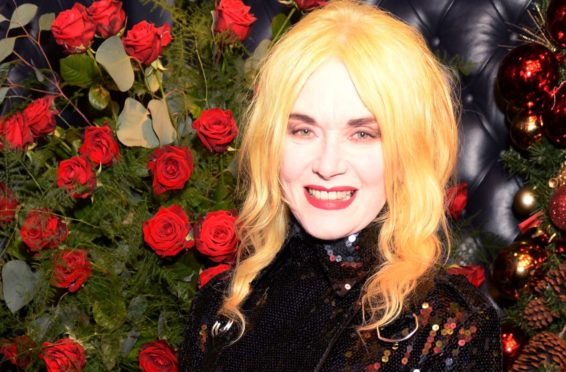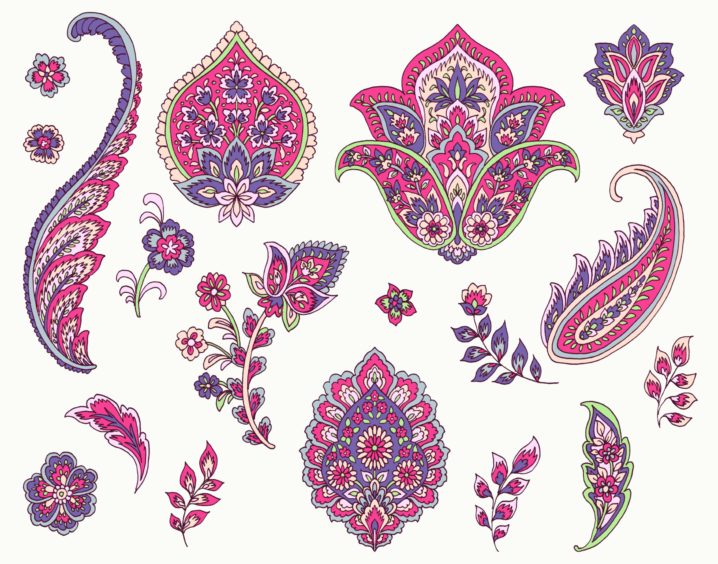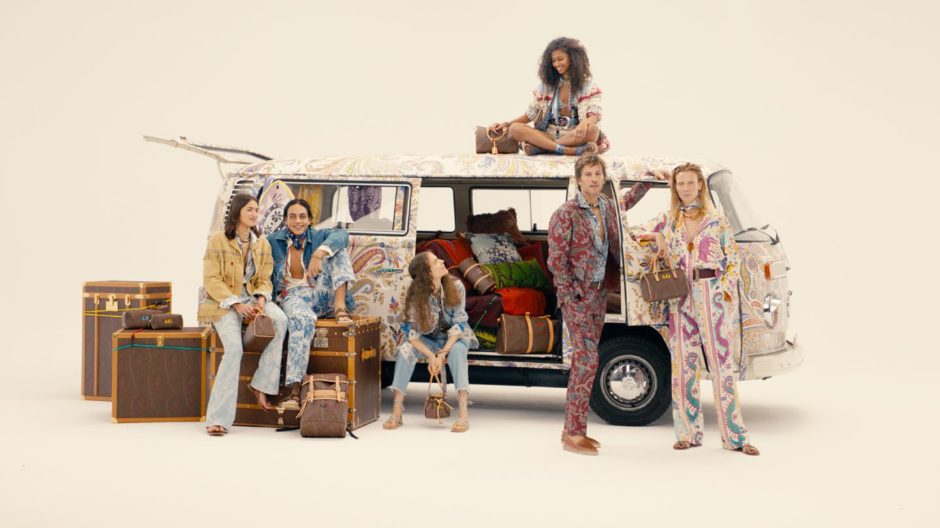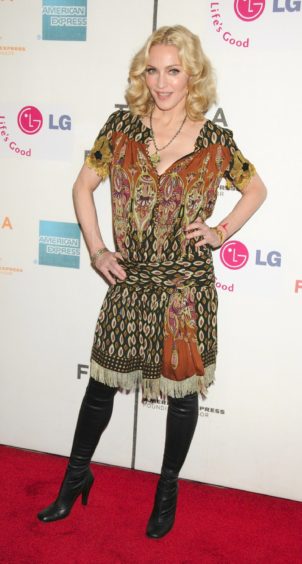
It has been a fashion must-have for centuries, worn by everyone from cowboys and rock stars to fashion models and blue-collar workers.
For fashion designer Pam Hogg, she remembers being entranced by the Paisley pattern designs on display in the Renfrewshire town’s museum, where she would go on childhood trips with her gran.
Her love of the distinctive teardrop motif has stayed with her throughout a career that has seen her dress pop stars like Lady Gaga and Bjork, and in her couture show last year she created the Paisley Poodle print as a nod to her affection for the design.
Now, Hogg is backing a call-out to the public to share items bearing the distinctive Paisley pattern as part of Paisley Museum’s 150th anniversary celebrations. It opened on April 11, 1871, and a display of Paisley pattern-adorned pieces will be a centrepiece when the building reopens following a £42 million redevelopment.
“It was part of my childhood. My grandmother lived in Paisley, so she’d often take me there,” she explained. “I loved the old looms, and the diversity of patterns made from a simple motif. It always felt like entering a living history.”
Hogg, who as well as being an award-winning film-maker and musician is also a patron of Paisley Museum, says the pattern’s longevity lies in its design. The motif in the shape of a curved droplet is called a boteh, originally imported to the west from Kashmir.
She said: “I love its simplicity, and the smoothness of the curve. It has perfect balance. It’s easily identifiable, simple and strong. The nature of its curves makes it easily adaptable, allowing it to blend with any other shapes.
“The Paisley pattern has had a lasting impact on the world and has been endlessly reinterpreted and reinvented. There are examples of Paisley pattern all around us.”
Kashmir shawls began to arrive in Europe in the 18th and 19th Centuries, brought back by travellers and via trade routes, including with the East India Company and the Mughal Empire.
By the 1800s they had become extremely fashionable and European textile centres began producing imitation Indian shawls. Manufacturers in Paisley quickly adopted new weaving techniques and technologies including Jacquard looms which allowed them to mass-produce the items and become the market leaders by the 1830s. This sparked the trend for referring to these shawls as “Paisleys”.
Although the fashion for the shawls dwindled by the 1870s, the Paisley pattern continued to appear in garments, and in the 1960s had a major revival thanks to rock stars like The Beatles and Jimi Hendrix wearing the designs. In turn, it became identified with the psychedelic style of the period and was associated with the hippy movement and the Summer of Love.
The designer said: “The Paisley pattern really shone in the ’60s, it became almost synonymous with that time.”
In the 1980s, Prince paid tribute to the connections between the motif and rock music with his song Paisley Park, and the establishment of his Paisley Park Records label and Paisley Park Studios. It was also around this time that Pam created one of her favourite pieces of clothing incorporating the pattern.
“I made a full-length velvet coat for my Flower Of Scotland collection,” she explained. “The colours were rich and dark with large stretched Paisley teardrops. Sadly it disappeared, but luckily I’d selected it for my first try at art direction on a photoshoot so I at least have a photograph of it.”
The pattern has continued to be a source of inspiration for leading fashion designers, including the Italian fashion house Etro.
Jacopo Etro, creative director of Etro Home & Accessories, said: “Paisley has appeared on every imaginable fabric, bridging East and West, masculine and feminine, elegance and eccentricity. The symbol has evolved and morphed as new techniques and colours have been applied to it, carrying the design from clothing into the worlds of accessories, fragrances and homewares.”
During that 1960s revival, the pattern also began to appear on mass-produced objects away from the world of fashion. The public have sporadically gifted these objects to the museum – from a frying pan to a roll of toilet paper donated for people’s “amusement, edification and enjoyment”.
It continues to appear on everyday objects, most recently on face masks during the Covid pandemic.
Museum wants public’s thoughts

When Paisley’s Free Public Library and Museum opened 150 years ago today, it was with the aim of providing local people with the means of self-improvement inspired by the ideals of the Scottish enlightenment.
It was open to all, but it did have strict by-laws for entry, which excluded anyone “in an intoxicated or unclean condition” or those “in whose house infectious diseases exist” from entering.
Kirsty Devine, Paisley Museum project director, said: “The iconic teardrop motif has long been associated with Paisley’s history and heritage and is an integral part of the museum’s collection.
“We will tell the story of this design, so synonymous with the town, from its Kashmir origins all the way through to its modern-day use by fashion labels.”
The public has until May 30 to submit their item suggestions for consideration. They should be emailed to paisleymuseum@renfrewshire.gov.uk or shared on social media using #ShowUsYourPaisley

Enjoy the convenience of having The Sunday Post delivered as a digital ePaper straight to your smartphone, tablet or computer.
Subscribe for only £5.49 a month and enjoy all the benefits of the printed paper as a digital replica.
Subscribe
 © Stan Seymour/Shutterstock
© Stan Seymour/Shutterstock